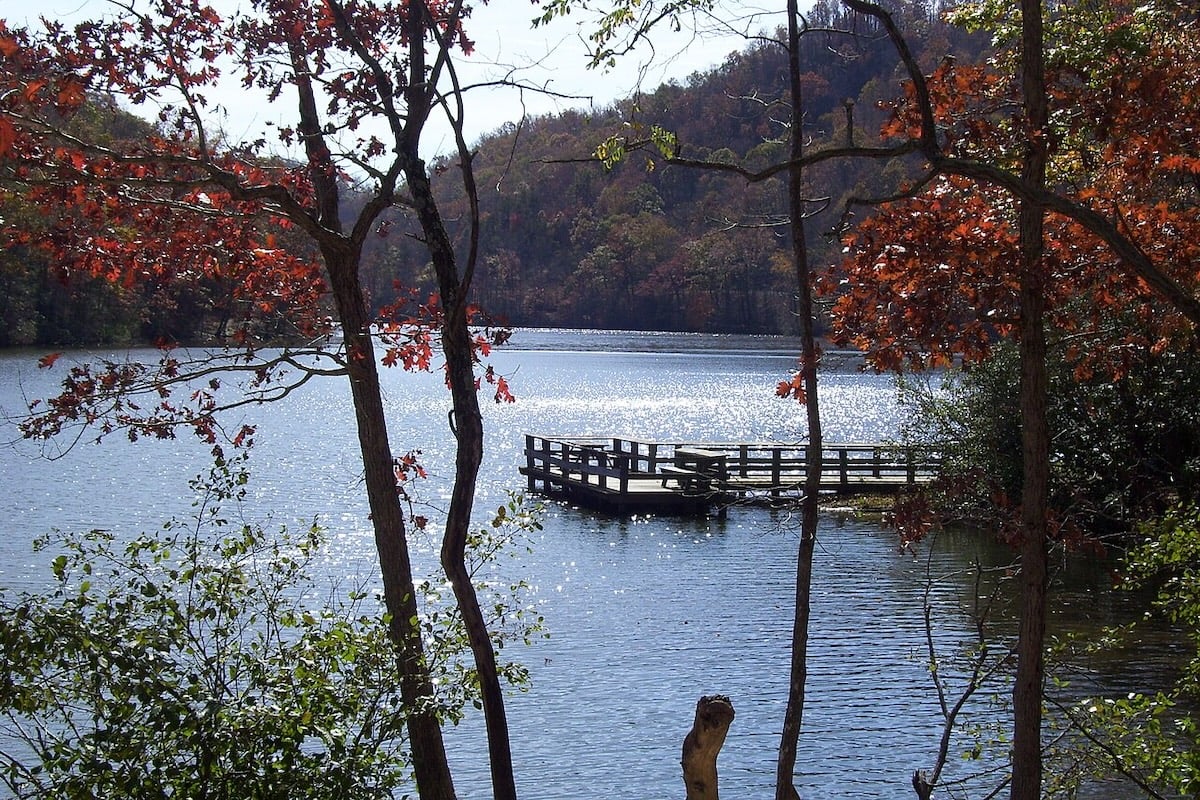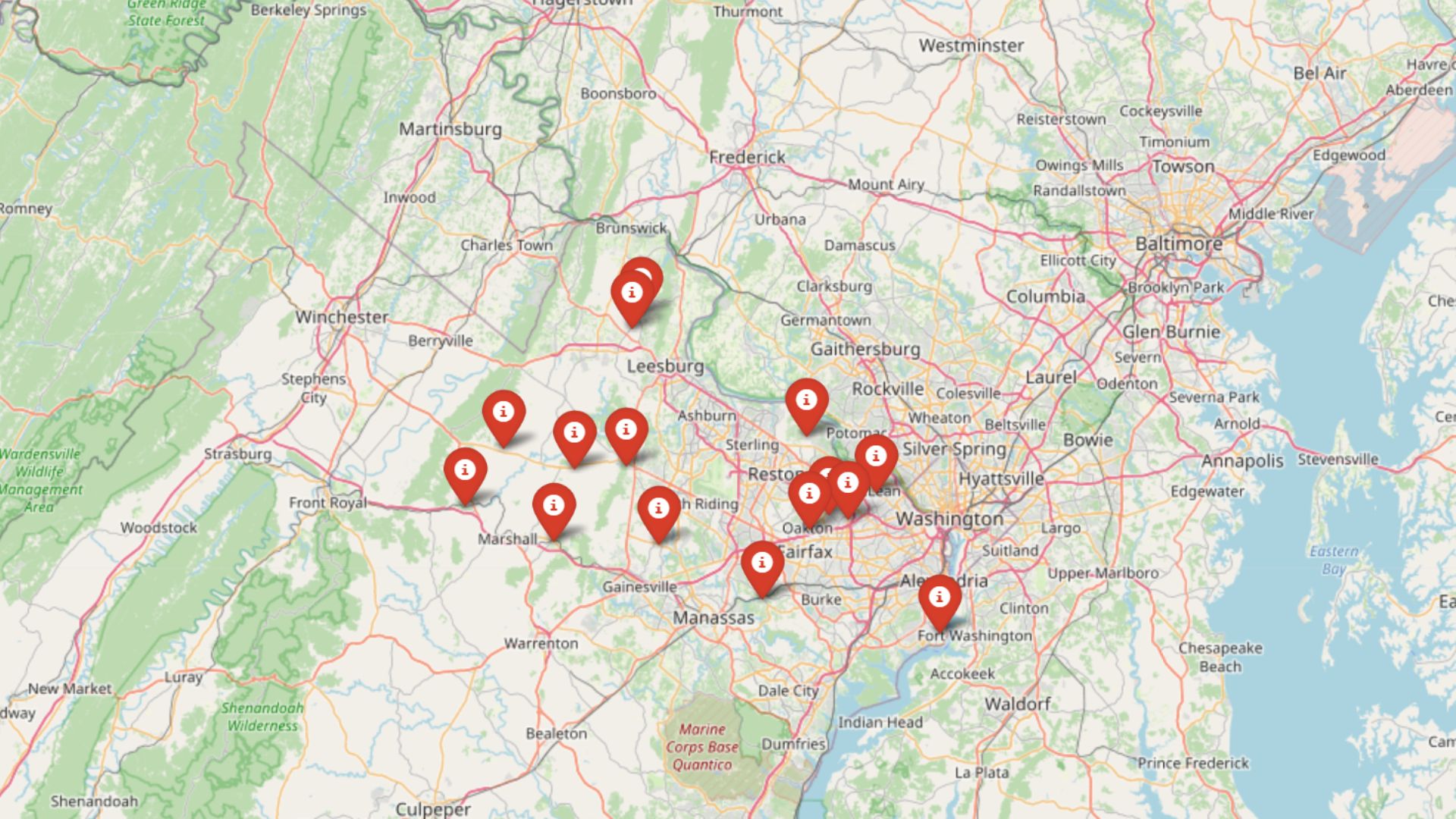
Eastern Virginia doesn’t so much end as dissolve, tapering into marsh, creek, and the wide mouth of the Chesapeake. Beyond the better-known cities, the land fractures into peninsulas and islands where small towns sit at the water’s edge, half hidden by spartina and pine.
These are places reached by ferries, swing bridges, or two-lane roads that run out at a dock. Their seclusion is geographic as much as cultural: rivers like the Rappahannock and York carve deep boundaries, while the Chesapeake itself holds whole communities apart on its islands and spits.
Some towns look east to barrier marshes, others west to the James or north to the Potomac, but all keep a rhythm closer to tide than traffic. Mobjack Bay gathers many of them in a loose cluster, where the 1804 New Point Comfort Lighthouse still stands sentinel at the southern tip of Mathews County.
To visit is to trade schedules for sky and water. The towns that follow are not strung along highways but scattered like shells along the Bay’s rim, each one a reminder of how Eastern Virginia still holds space for quiet.
25. Tangier

Tangier sits low in the Chesapeake, a salt-sprayed sliver where marsh grass sighs and skiffs whisper home at dusk. Seclusion is the rule: there’s no road in—only boat or small plane—so days move to the tide, not a timetable.
The vibe is waterman-honest and timeworn: clapboard houses, crab shanties on stilts, church bells, and a dialect that sounds like history itself. Wander the boardwalks over eelgrass flats, kayak the glassy creeks, visit the small island museum, or watch blue crabs hauled and sorted by hand.
Fishing and crabbing remain the lifeblood, with a little summertime hospitality to welcome curious guests. When evening turns the marsh to copper, the island feels like a secret kept by the Bay. It’s the kind of place that reminds you how quiet the world can be.
Where is Tangier?
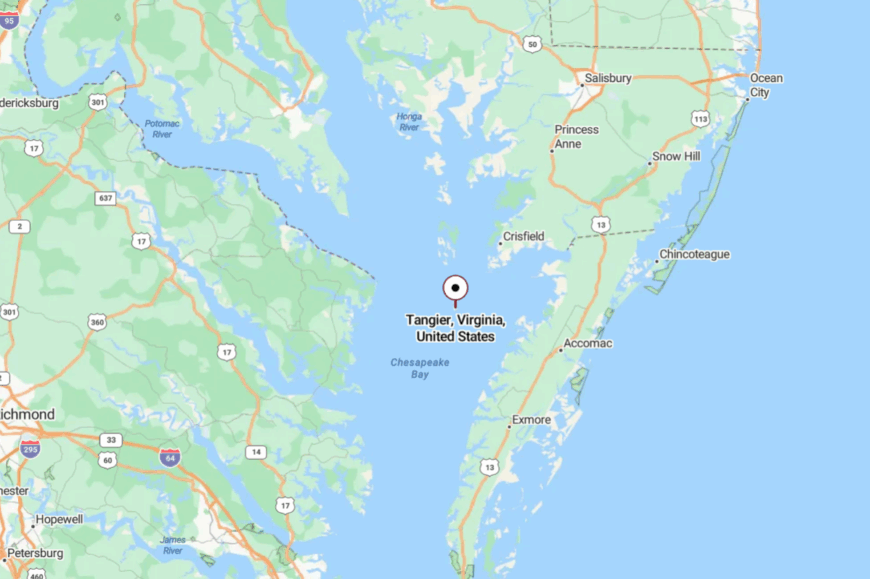
Tangier lies in Accomack County, about a dozen miles off Virginia’s Eastern Shore in the middle of the Chesapeake Bay. Most visitors come by seasonal ferry from Onancock or by charter from nearby ports; a tiny airstrip serves small planes.
The approach is all water and sky until the island rises like a thin green line. Close enough to reach, far enough to feel like another world.
24. Saxis
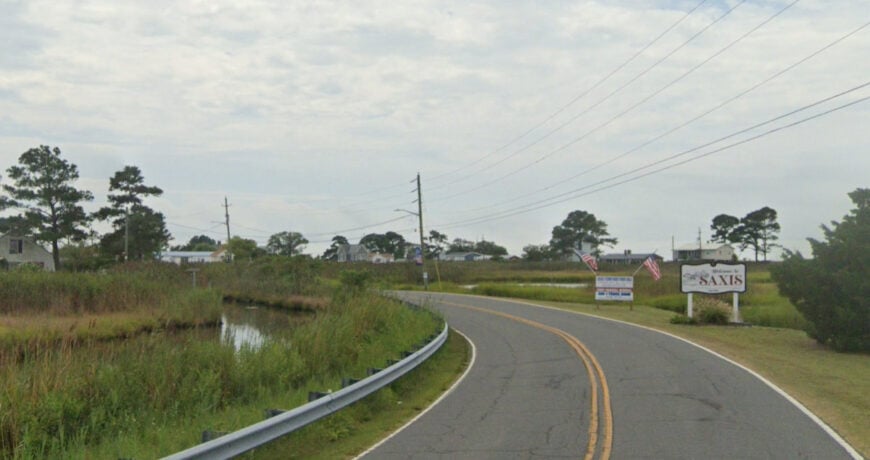
Saxis clings to the edge of Pocomoke Sound, half town and half tide, the kind of place where gulls and workboats set the soundtrack. Its isolation comes from a long, low causeway and miles of marsh that keep casual traffic away.
The vibe is salty and unadorned—weathered crab houses, a short main street, and porches that face the wind. Cast for croaker at the public pier, bird the Saxis Wildlife Management Area, photograph golden-hour marsh pools, or chat with watermen mending pots.
Crabbing and oystering anchor the economy, with a whisper of weekend tourism. At night, the horizon blinks with distant beacons and nothing else. Saxis is small enough to hear the tide turn.
Where is Saxis?
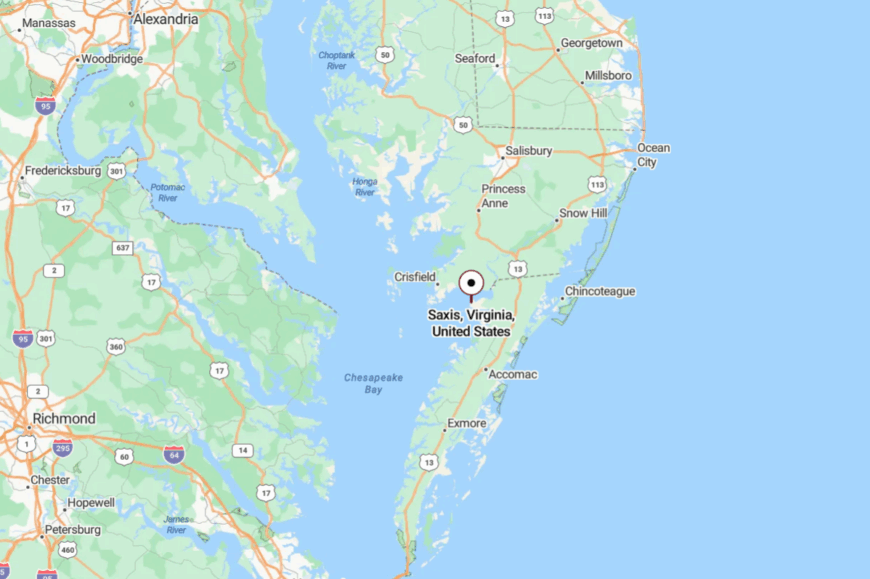
Saxis sits in the far northwest of Accomack County on Pocomoke Sound. From Temperanceville or Oak Hall on US-13, you follow Saxis Road across fields and marsh to the causeway.
The last miles trade billboards for egrets and cordgrass. You arrive with salt on the air and quiet on your shoulders.
23. Wachapreague

Wachapreague is the “Little City by the Sea,” a cluster of cottages where streets end in marsh and the barrier islands wink beyond the channel. Seclusion stems from the winding approach and a watery maze that shields it from the mainland’s churn.
The vibe is breezy and old-school coastal—front porches, wooden skiffs, a marina that smells of rope and sun. Charter a flounder trip, kayak the back bays, stroll the waterfront at dusk, or boat to the wild ocean beach across the flats.
Tourism is gentle here, sharing space with charter captains and research boats. When the wind drops, the marsh goes mirror-calm and voices carry like birdsong. The town feels held in the palm of the sea.
Where is Wachapreague?

Wachapreague lies on Virginia’s Atlantic side in central Accomack County, about 8 miles east of US-13. VA-180 threads through fields and pines to the harbor.
The barrier marshes form a soft green wall between town and open water. It’s close to the ocean, yet tucked safely out of its hurry.
22. Oyster
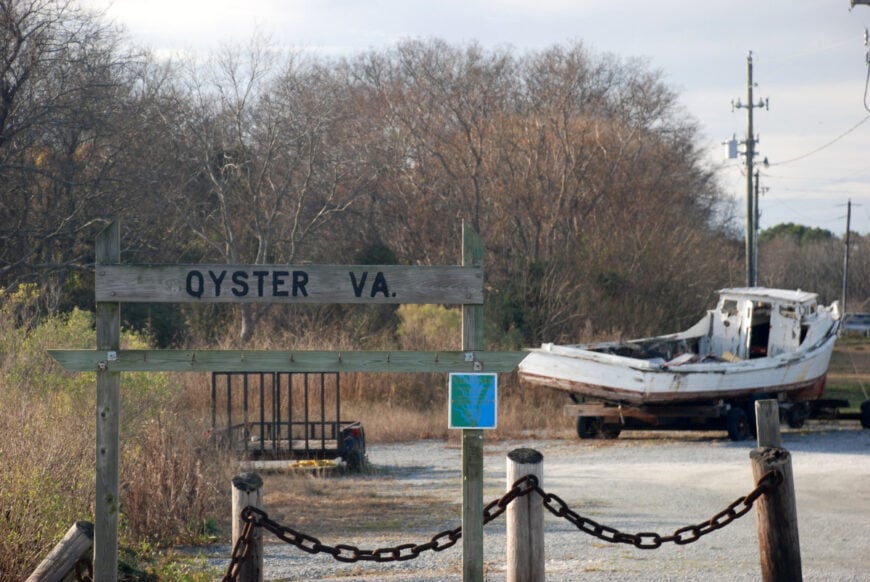
Oyster is a working harbor at the end of a ribbon road, where stacks of shells gleam white and laughing gulls circle the docks. Its seclusion comes from the seaside location and the low, marshy miles that lead there—places travelers only find on purpose.
The vibe is quietly industrious: oystermen easing off at dawn, a small marine lab presence, and cottages weathered to the color of driftwood. Launch a kayak toward the barrier islands, watch terns feed in the channel, beachcomb at dead low, or follow the soft clatter of shells to a dockside overlook.
Small-scale fisheries and coastal fieldwork give the town its rhythm. Afternoon light turns the marsh a radiant green, and time seems to slacken with the tide. Oyster is where the map thins to water and sky.
Where is Oyster?
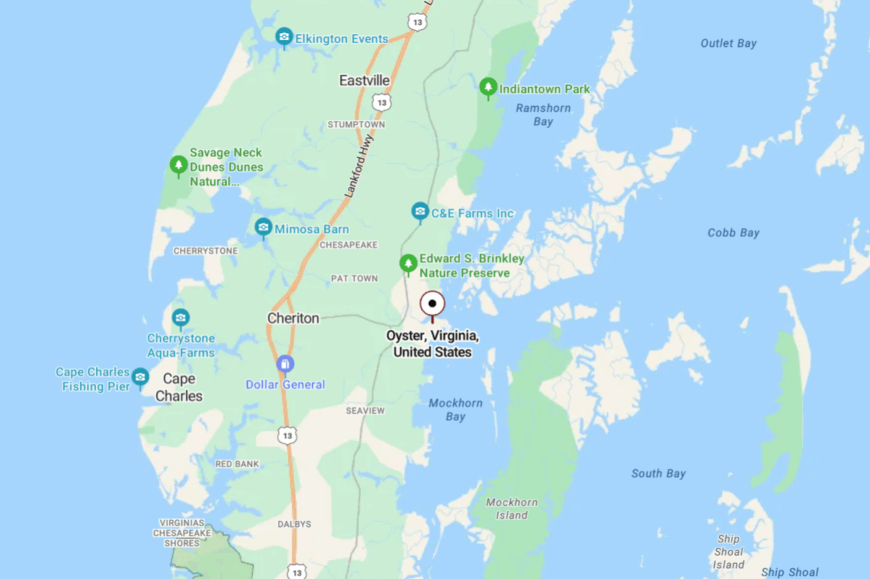
Oyster sits on the seaside of Northampton County, a few winding miles east of Cape Charles. Reach it via county roads that narrow until they meet the harbor.
The last bends sweep past spartina and creeks that flash with minnows. It feels like the end of the lane, and that’s the charm.
21. Quinby
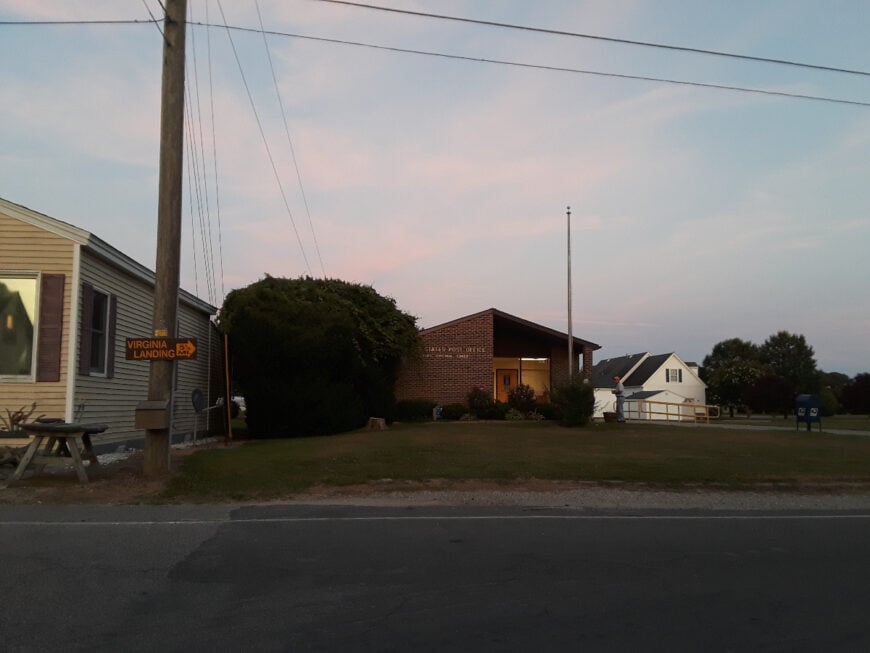
Quinby is a harbor tucked into the marsh, protected by miles of cordgrass and a serpentine channel to the sea. Its off-the-route location keeps it hushed; you don’t pass through Quinby—you aim for it.
The vibe is spare and salt-lean: a ramp busy at daybreak, small homes facing the water, and gulls gossiping over bait buckets. Boat out for seaside fishing, paddle sunrise creeks, watch ospreys work the channel, or linger where working boats slip past with easy grace.
The economy is a blend of shellfish, charters, and weekend cottages. On windless evenings, the water lies like polished slate. Here, the Bay sets the tempo.
Where is Quinby?
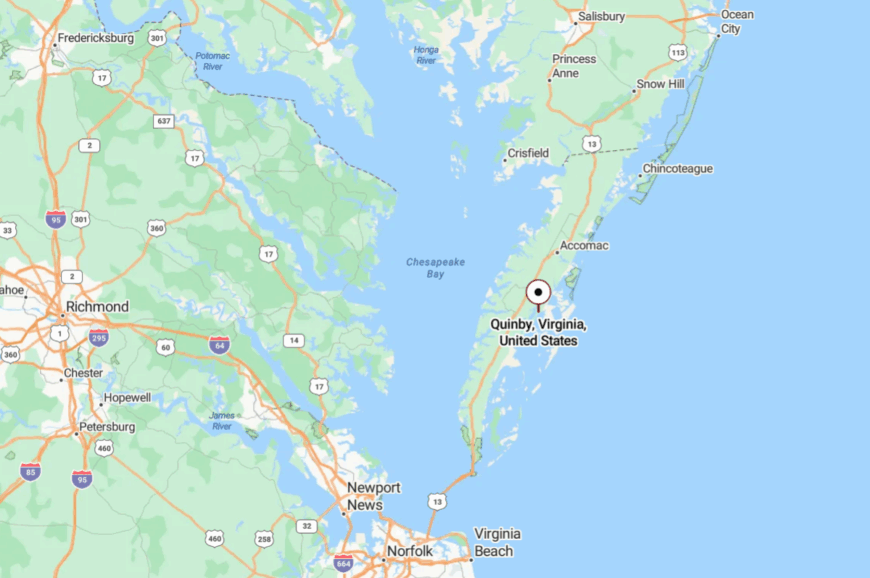
Quinby rests on the seaside of eastern Accomack County, roughly 10 miles northeast of Exmore. VA-182 and VA-605 lead you across fields and then into the marsh.
The road runs out at the harbor, and the horizon opens to spartina and sky. It’s close to the ocean, far from the rush.
20. Harborton
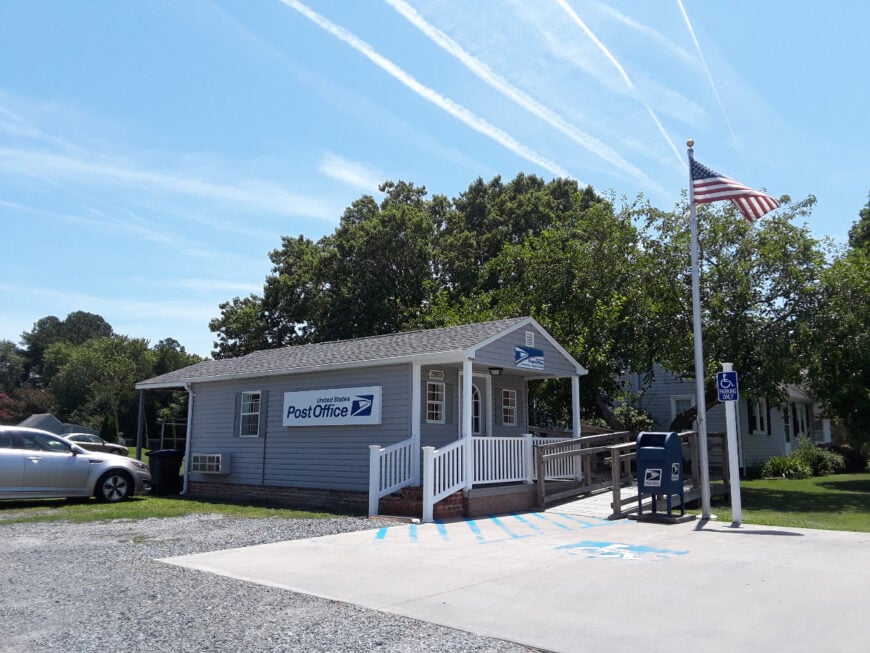
Harborton sits on a sheltered bend of Pungoteague Creek, a quiet bayside village where porches face the water and boats nap at tidy slips. Seclusion arrives with the narrowing road and the way the creek hems the town in a gentle curve.
The vibe is neighborly and unhurried—white-painted steps, skiffs on trailers, and herons stalking the shallows. Launch a kayak, fish the creek mouth, watch sunsets from the little bluff, or wander past 19th-century cottages with a camera.
Small marinas and local trades mingle with retirees who came for the quiet. The creek, the wind, and the light do most of the talking. Harborton reminds you how restful edges can be.
Where is Harborton?
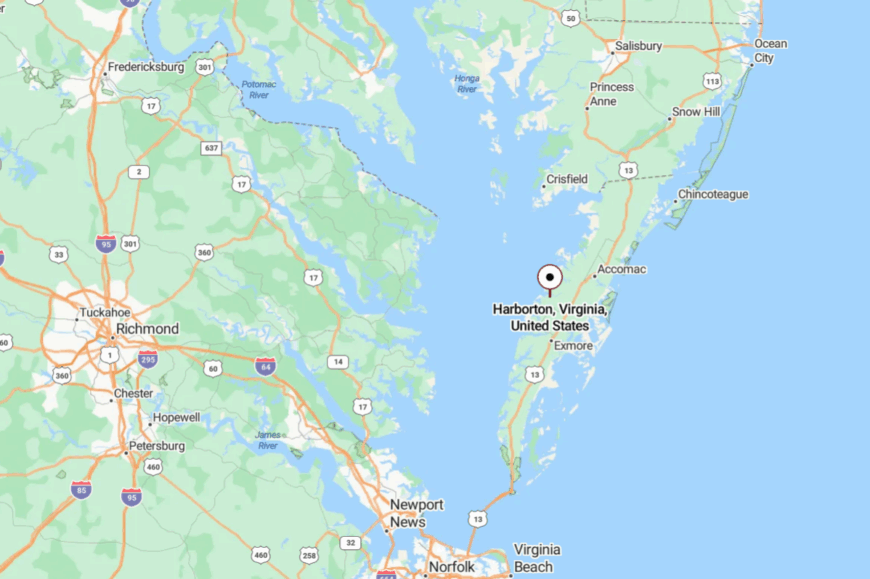
Harborton is in central Accomack County on Virginia’s bayside Eastern Shore. From US-13 at Keller, you take VA-180 Alternate (Harborton Road) west across farmland until the pavement reaches the water.
The final miles pass fields, creeks, and quiet woods before ending at Pungoteague Creek. The harbor curves around the village in a way that makes it feel both sheltered and set apart.
19. Ophelia
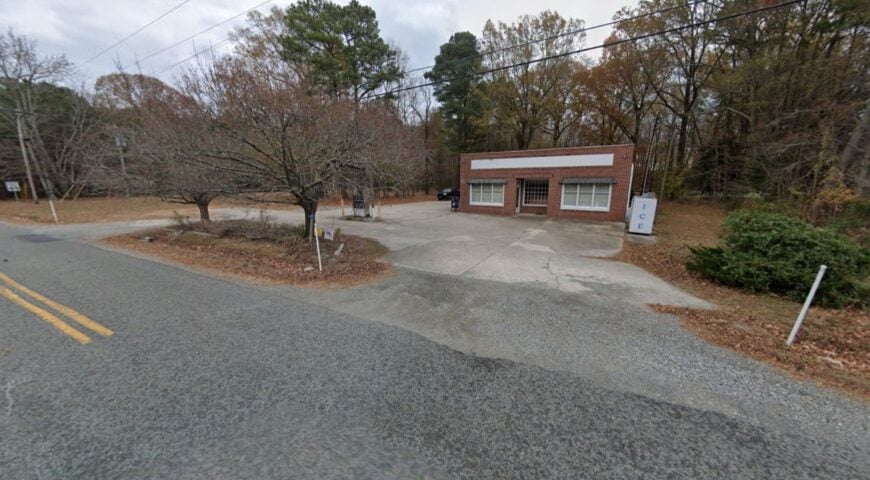
Ophelia spreads out along low Chesapeake shores near Ingram Bay and the mouth of the Great Wicomico River, a lattice of creeks and little sand spits. Seclusion comes from the peninsula’s skinny roads and the long detours water demands.
The vibe is salt-soft and practical—piers with crab pots, small cottages under loblolly pines, and tides that set schedules. Cast from a pier, beachcomb narrow strands, watch dolphins on calm days, or drift a kayak into quiet coves.
Fishing and seasonal boating stitch the economy together. Evenings turn the Bay pearl-gray and still. Ophelia is a pocket of tide and time.
Where is Ophelia?
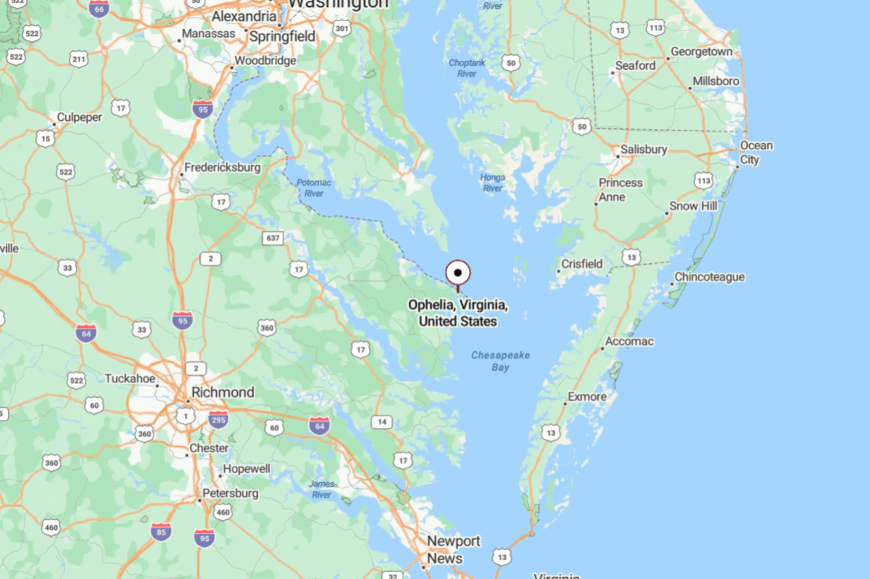
Ophelia lies in Northumberland County on Virginia’s Northern Neck, set along the Chesapeake Bay near Ingram Bay and the Great Wicomico River. VA-360 carries you east from Heathsville, with smaller county roads bending past fields and pine to the waterfront.
The last turns skirt marsh and narrow creeks before the horizon opens wide to the Bay. It’s a quiet edge of the Neck, closer to tides and watermen than highways.
18. Kinsale
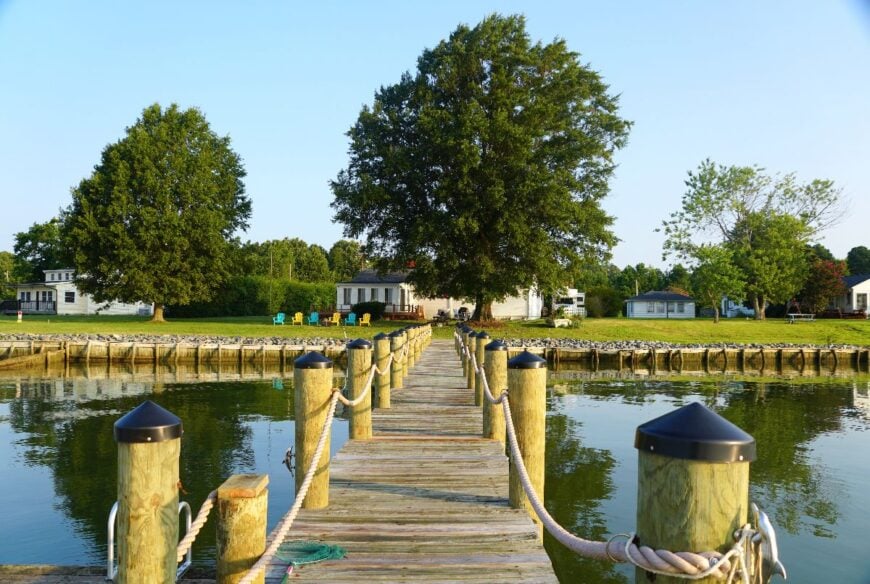
Kinsale is an old river port that whispers of schooners and tobacco days, now slowed to a village of porches and docks along the Yeocomico. Its out-of-the-way setting down branching roads keeps it hushed and pleasantly self-contained.
The vibe is historic and easygoing—white fences, a petite museum, and boats rocking in a protected cove. Tour the Kinsale Museum, paddle glassy water at dawn, photograph weathered wharves, or sit under a shade tree and listen for boat wakes tapping the pilings.
Small marinas, river tourism, and weekenders fuel a gentle economy. When the sun slides behind the trees, the river darkens to ink. Kinsale wears its quiet like an heirloom.
Where is Kinsale?
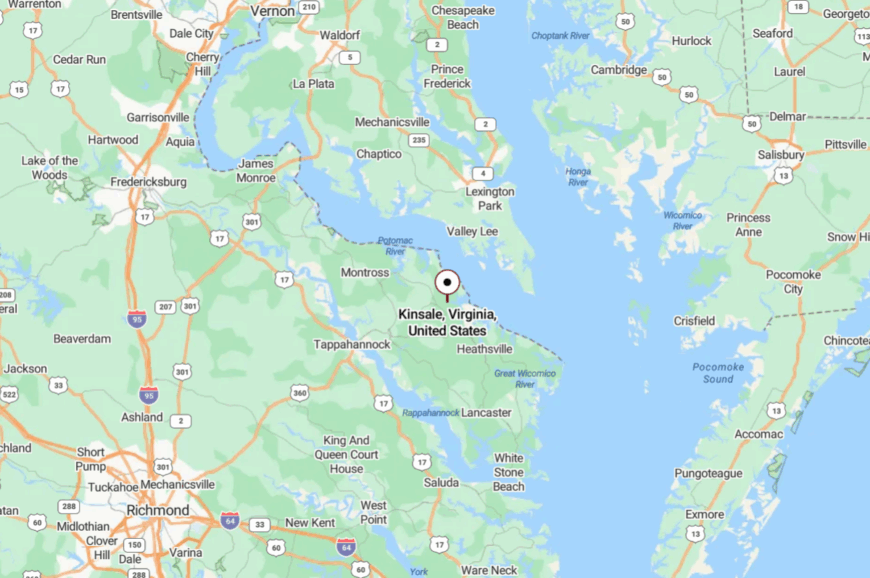
Kinsale sits in Westmoreland County near the Yeocomico River’s bends, roughly 14 miles southeast of Montross.
VA-202 to VA-203 drops you into a pocket of water and woods. The road ends in slips and sky. It’s near the Potomac, yet feels far from everything.
17. Morattico
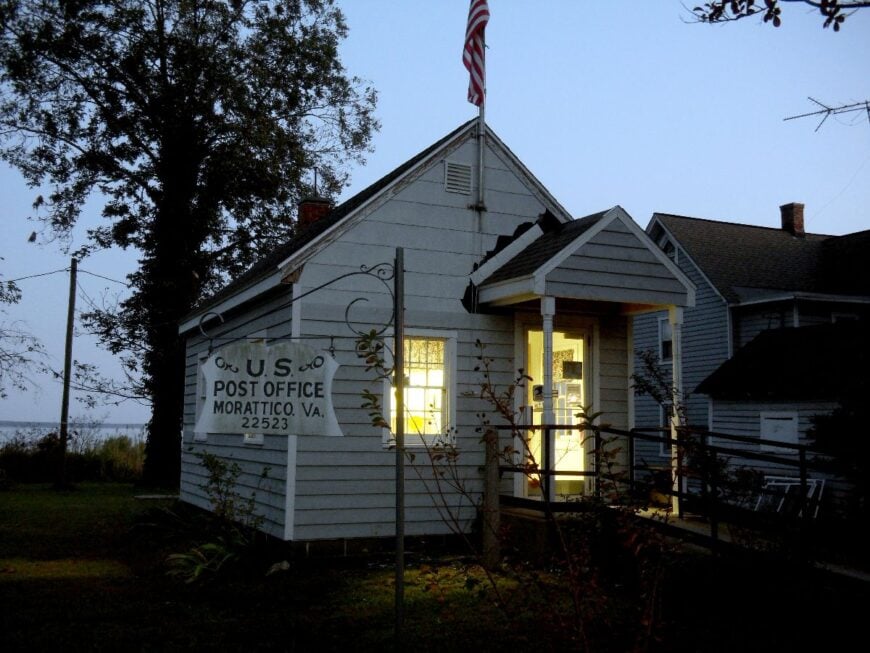
Morattico perches on a Rappahannock River point, a string of cottages and crab pots where river light does painterly things to clapboard. Its seclusion is geographic—the river on three sides and a long meander of lanes on the fourth.
The vibe is museum-meets-porch swing: a tiny waterfront museum, tidy yards, and residents who time supper to the tide. Walk the shoreline, scan for ospreys, slip a kayak into calm backwaters, or linger among photographs of the old packing houses.
Fishing memories share space with present-day weekenders. Evening turns the water to hammered silver. Morattico makes room for unhurried thoughts.
Where is Morattico?
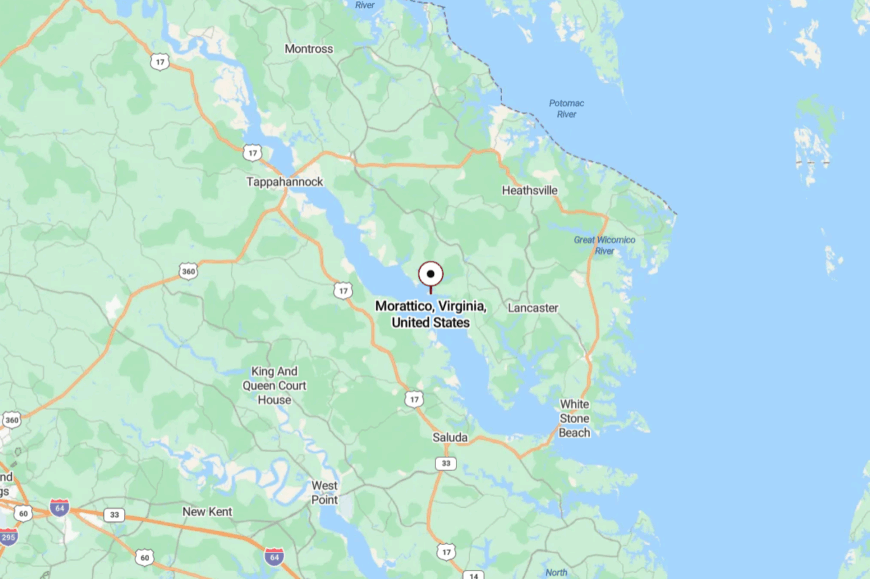
Morattico is in Lancaster County on the Northern Neck, about 12 miles west of Kilmarnock. From VA-3, you angle onto VA-354 and follow it until the river takes over the view.
The last streets narrow toward the point. It feels like a soft landing at the end of the land.
16. Merry Point
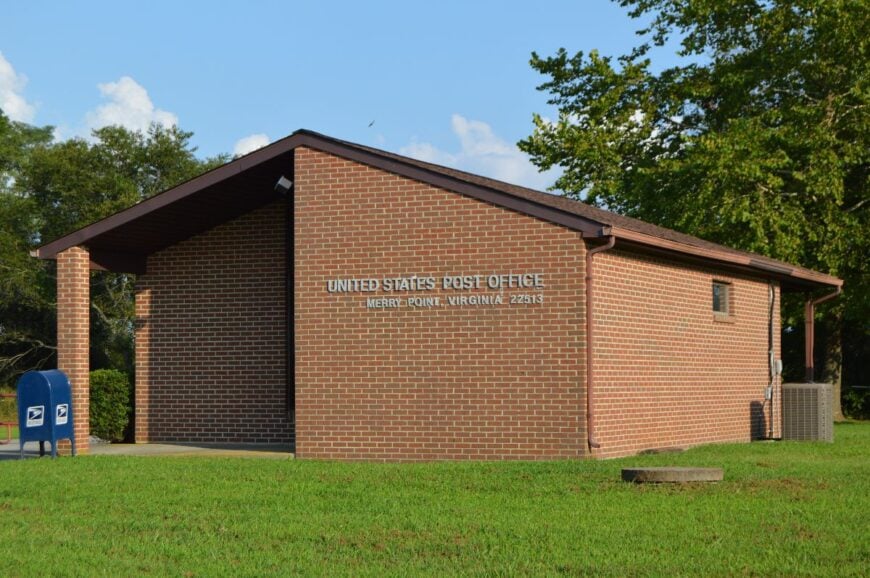
Merry Point is all river curves and whispering pines, famous locally for a petite cable ferry that glides from bank to bank. Its seclusion comes from the Corrotoman’s deep folds and the absence of big roads to cross them.
The vibe is woodsy and porch-quiet—canoes under sheds, sandy landings, and boat wakes that arrive like a heartbeat. Ride the little ferry just because, launch a kayak at first light, fish shaded bends, or bird the creeks where egrets stitch the air.
Life is a mix of small farms, retirees, and folks who measure distance by water. When fog lifts off the Corrotoman, the whole place feels weightless. Merry Point is a whisper you can visit.
Where is Merry Point?
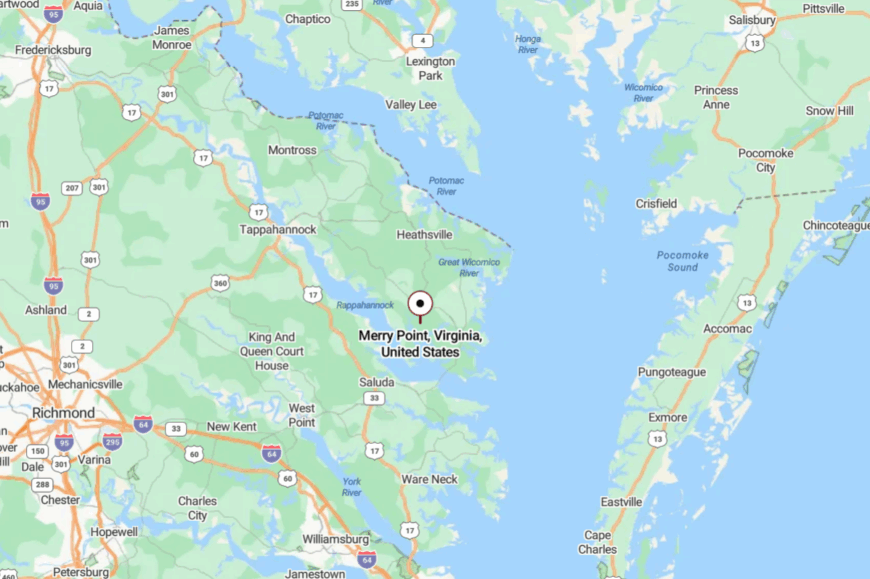
Merry Point lies in Lancaster County, southwest of Kilmarnock, tucked into the Corrotoman River’s arms. County roads lace through woods until the ferry road simply ends at the water.
Crossings are short, slow, and charmingly old-fashioned. It’s nearby on a map, yet delightfully out of time.
15. Lewisetta
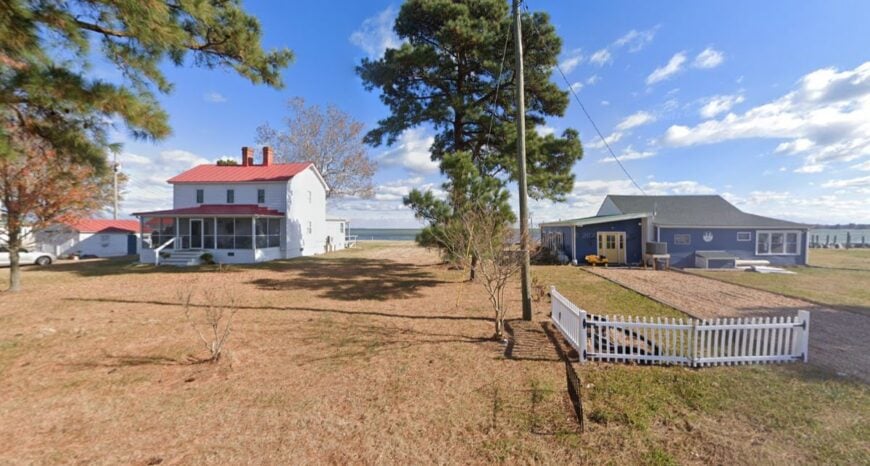
Lewisetta edges the Potomac at its broadest reach, a little row of piers and cottages facing a horizon of nothing but water and sky. Seclusion comes from the tip-of-the-peninsula setting and the long detour to get anywhere else.
The vibe is open and salt-bright—striped bass talk at the dock, a clutch of crab pots, and gulls that know every returning boat. Fish the river mouth, walk narrow beaches at low tide, watch ships ghost by the channel, or paddle into creeks hidden behind reeds.
The economy leans on fishing and weekend homes. Twilight lays a velvet hush on the river. Lewisetta feels like the very edge of a page.
Where is Lewisetta?
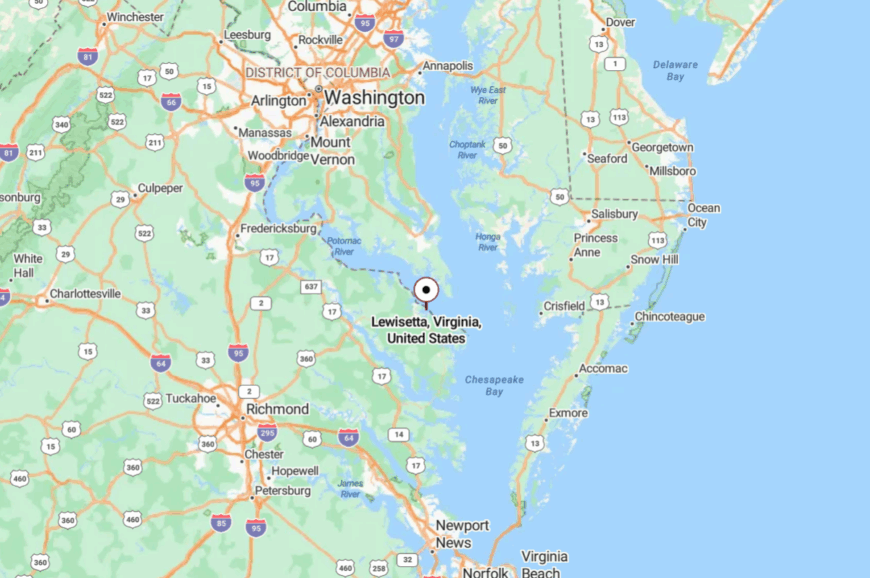
Lewisetta is in Northumberland County near the Potomac’s mouth, around 20 miles northeast of Kilmarnock. VA-360 and VA-624 thread you through pine and pasture to the waterline.
The last turns follow creeks and little points that point to the Bay. It’s where the land runs out and peace begins.
14. Claremont
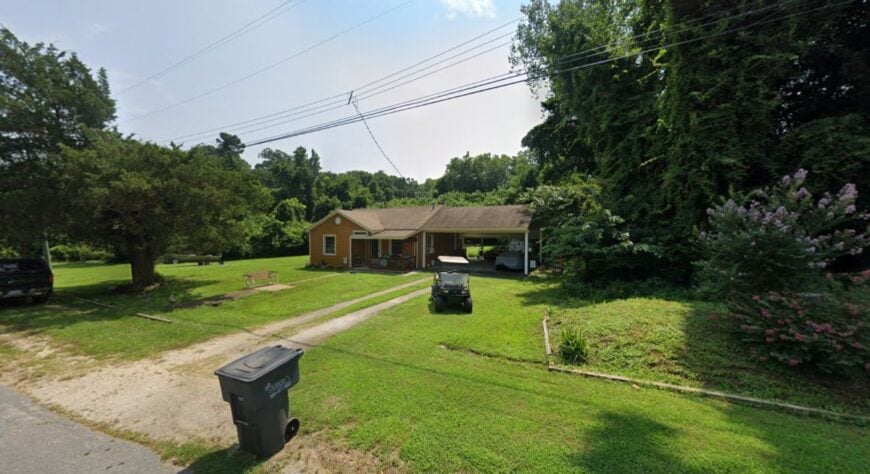
Claremont overlooks the James from a high, wooded bluff—quiet streets, old porches, and a river that fills the windows like a painting. Seclusion is baked into its riverbank perch and the long drive out from Richmond, closer to fifty miles than thirty.
The vibe is historic and hushed: 19th-century homes, a sleepy riverfront, and cicadas that own the afternoon. Walk down to the landing, watch barges slide past, bird the bottomlands, or follow backroads through pine and cottonwood.
A few small businesses share space with commuters who trade city glare for river light. When the sun melts into the channel, the world seems to pause. Claremont is content to be a beautiful secret.
Where is Claremont?
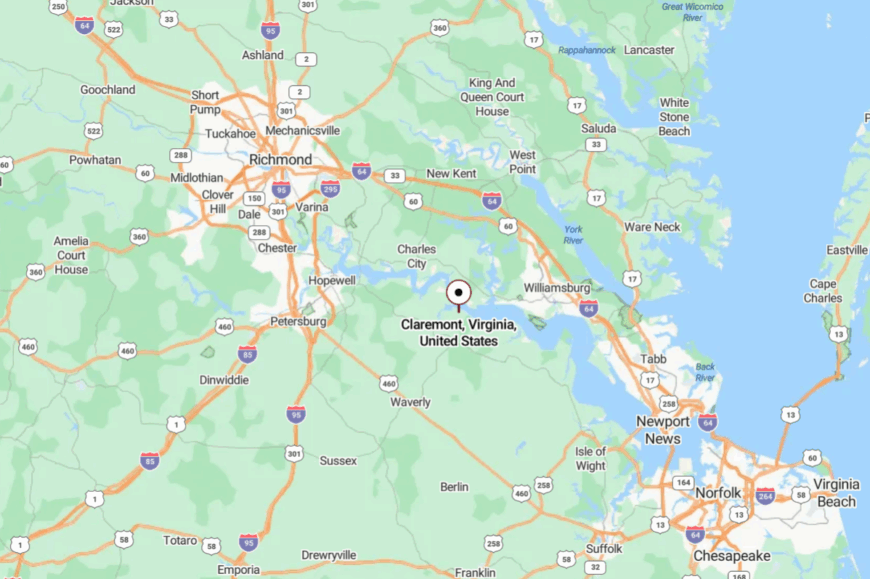
Claremont sits in Surry County on the south bank of the James River, roughly 45–50 driving miles southeast of Richmond. The direct route follows VA-10 east from Hopewell and then local roads that drop down toward the bluff above the river.
The last stretch loses traffic as trees crowd close to the pavement. The reward is wide river light and a town perched quietly above the channel.
13. Rescue
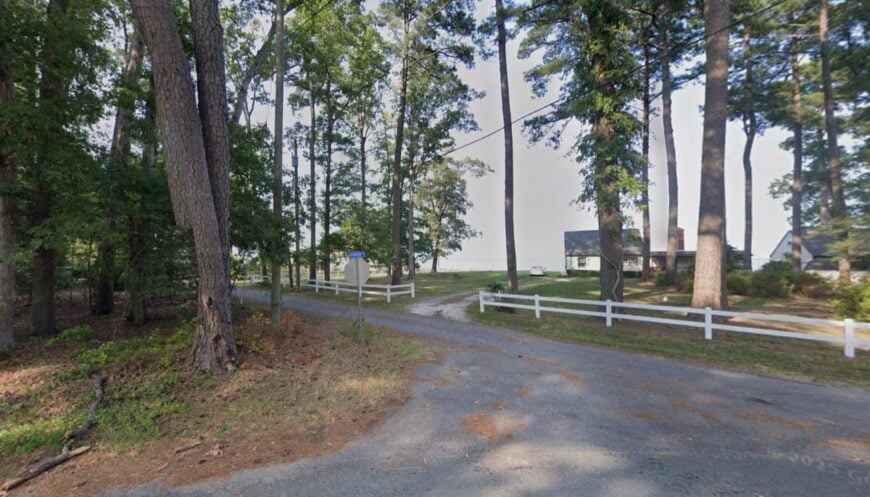
Rescue curls around Jones Creek and the Pagan River, a waterside hamlet whose very name feels like a promise. Its seclusion is shaped by bridges and backroads; lanes dead-end at docks or bend into woods, and the river keeps things cozy.
The vibe is neighborly and nautical—little marinas, crab pots stacked by sheds, and egrets patrol the shallows like sentries. Paddle the creeks at dawn, drop a line from a pier, photograph sunset over the marsh, or amble down to the old firehouse corner.
Local work ties to boatyards, fishing, and nearby Smithfield—then everyone comes home to quiet water. Evening pulls a hush across the slips. Rescue wears serenity like a soft jacket.
Where is Rescue?
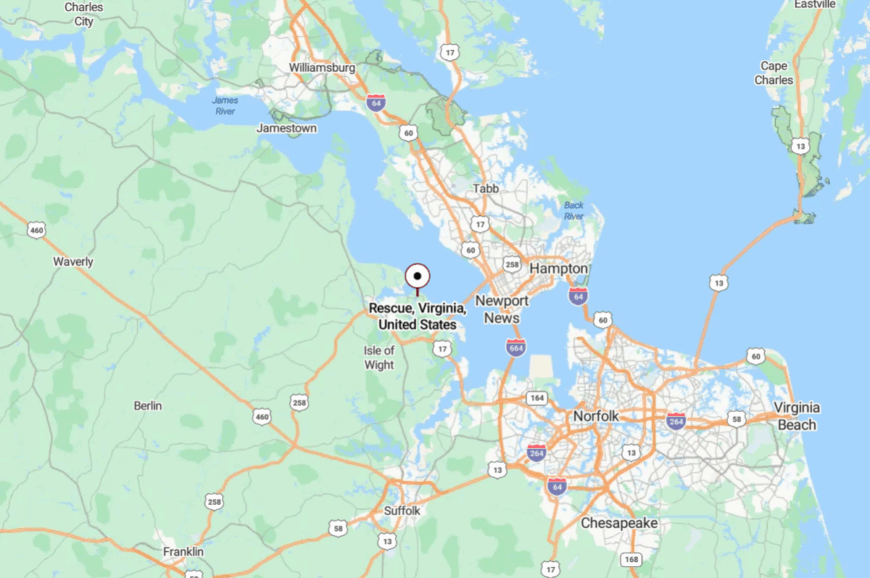
Rescue is in Isle of Wight County, east of Smithfield, tucked between Jones Creek and the Pagan River. From US-258, you wander Battery Park and Rescue roads until the pavement meets pilings.
The bridges are low, the streets narrower still. It’s close to town, yet entirely its own pocket of calm.
12. Wake

Wake is a crossroads of farm lanes and loblolly windbreaks, unhurried even by rural standards. Its seclusion is simple: fields on every side, few signs, and a long drive to any big store.
The vibe is sun-bleached and home-grown—produce stands, small churches, and porches with rocking chairs that know every breeze. Bike quiet blacktop to creek landings, cast for croaker near the Piankatank, hunt for roadside sunflowers, or wander evening roads when the light goes honey-gold.
Farming and a sprinkle of marine trades keep life steady. Nights are dark enough to count constellations. Wake is where the day breathes out.
Where is Wake?

Wake sits in Middlesex County between Saluda and Deltaville on the Middle Peninsula. From VA-33, you slip onto county routes that weave past fields and old farmhouses.
Traffic thins to almost nothing. It’s close enough for errands, far enough for stars.
11. Wicomico Church
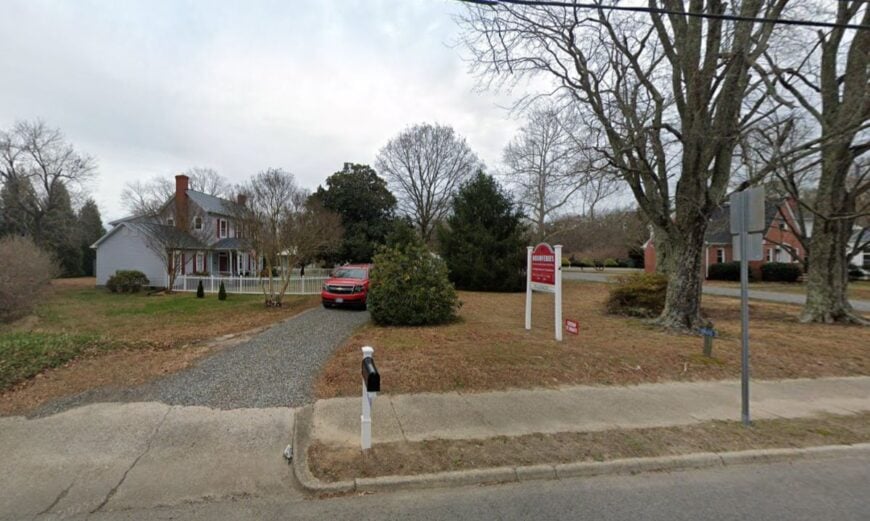
Wicomico Church keeps to its hedgerows and chapel spire, a quiet Northern Neck community folded into woods and creek country. Seclusion comes from the long, looping roads and the way water carves the land into private coves.
The vibe is softly rural—farmstands, an old crossroads store, and creeks that glitter through the trees. Kayak Dividing Creek at sunrise, bird the nearby nature preserve, browse a humble antiques nook, or photograph churchyard stonework in late light.
Small farms and retirees shape a low-key rhythm. When evening falls, the pines hold a pocket of stillness. It’s the kind of place that makes time feel taller.
Where is Wicomico Church?
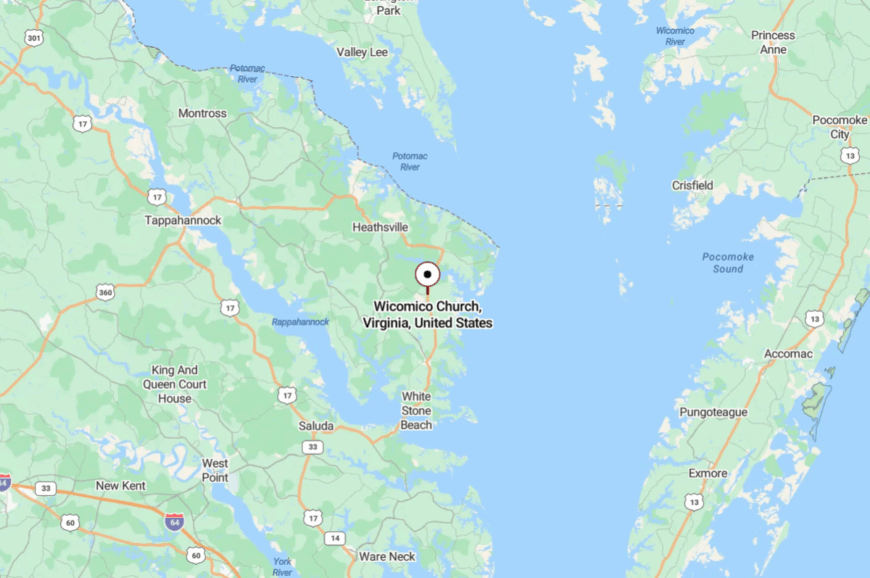
Wicomico Church lies in Northumberland County, northwest of Kilmarnock, nestled between Dividing Creek and the Great Wicomico River. VA-200 leads you through rolling pasture and pine to the old crossroads.
The last miles are all creeks, coves, and trees. Close to the Bay’s riches, yet tucked into its own hush.
10. New Point

New Point is a tranquil coastal community with a population of just a few hundred residents, making it a perfect spot for those seeking solitude.
I’ve found peace wandering along its quiet beaches and visiting the historic New Point Comfort Lighthouse, which dates back to 1804 and stands as a beacon of the area’s rich maritime history.
Outdoor enthusiasts like me can enjoy bird watching and exploring the nearby New Point Comfort Natural Area Preserve, a haven for native wildlife. The absence of bustling industries keeps the area pristine, with local activities centered around small-scale fishing and appreciating the natural surroundings.
What truly sets New Point apart is its vast undeveloped lands and the calming presence of the Chesapeake Bay, offering breathtaking sunsets and a serene atmosphere.
Its seclusion is enhanced by the minimal traffic and limited commercial development, allowing visitors to unwind and disconnect from the fast pace of modern life.
Where is New Point?

Nestled at the southern tip of Mathews County in Eastern Virginia, New Point is bordered by the Chesapeake Bay and the mouth of Mobjack Bay, surrounded on three sides by water. This geographic setting contributes to its secluded feel, as it’s accessible primarily by narrow, winding roads.
The isolation is further emphasized by natural barriers of wetlands and marshes that envelop the community. To reach New Point, I usually take State Route 14, then navigate the scenic byways of Mathews County, which is about an hour and a half drive from the nearest city of Newport News.
The journey itself is a step back in time, leading to a peaceful enclave where the sounds of nature replace the noise of urban life.
9. Dutton

Dutton is a small, unincorporated community with a close-knit population that barely reaches a few hundred residents. I love the peaceful ambiance here, where towering pine forests and sprawling farmlands create a serene backdrop for daily life.
Outdoor activities are plentiful—I’ve spent afternoons hiking through the woods, bird watching, and simply enjoying the tranquility of the countryside. The mainstay of Dutton’s local economy is agriculture, with many family-owned farms dotting the landscape, alongside some involvement in the timber industry.
What makes Dutton genuinely secluded is the large properties that offer residents ample space and privacy, all while being nestled away from the bustle of city life. The absence of commercial development and the embrace of natural surroundings make it an idyllic retreat for those seeking a simpler, quieter way of living.
Where is Dutton?

Located in Gloucester County, Eastern Virginia, Dutton sits comfortably off the beaten path. It’s situated west of the Piankatank River, adding to its sense of isolation from more populated areas.
The community is tucked away among winding country roads, with Route 198 being the main access point that connects it to neighboring towns. Getting to Dutton often feels like a journey back in time; I usually drive through scenic rural landscapes that highlight the area’s natural beauty.
The distance from major highways and urban centers reinforces its secluded charm, making Dutton a perfect escape for those looking to immerse themselves in peaceful rural life.
8. Diggs

Diggs is a quaint unincorporated community that captures the essence of Virginia’s rural heritage, with a population that hovers around a few hundred residents. Whenever I visit, I’m struck by the expansive open spaces and the quiet, unhurried pace of life.
Outdoor activities are simple yet fulfilling—strolling through the countryside, visiting local farms, and enjoying fresh seafood caught by local fishermen. The main industries here revolve around agriculture and fishing, sustaining the community’s deep-rooted connection to the land and sea.
What makes Diggs particularly secluded is the minimal development and preservation of its rural character, offering a peaceful lifestyle removed from the distractions of modern urban areas.
The community’s dedication to maintaining its heritage ensures that the tranquility and charm of Diggs remain untouched.
Where is Diggs?

Nestled in Mathews County on Virginia’s Middle Peninsula, Diggs is located near the Chesapeake Bay, adding to its secluded atmosphere. The community is off the main tourist routes, accessible primarily via rural roads like Route 223.
I’ve found that getting to Diggs involves meandering through scenic landscapes dotted with farms and waterways, contributing to the sense of escape. The area’s remoteness is enhanced by natural barriers like marshlands and inlets, which not only provide beautiful scenery but also limit excessive development.
For those looking to experience a secluded rural retreat steeped in history, Diggs offers an authentic and peaceful destination.
7. Mobjack

Mobjack is a hidden gem with a small population that embraces the tranquility of bayside living. Whenever I’m in need of a peaceful retreat, Mobjack’s expansive undeveloped lands and scenic waterfronts provide the perfect escape.
Activities here revolve around the water—I enjoy boating, fishing, and simply soaking in the views where the East River opens into Mobjack Bay, part of the larger confluence that also gathers the North and Ware Rivers further along the shore. The absence of significant industries keeps the area pristine, with local livelihoods tied to small-scale fishing and oyster harvesting.
What sets Mobjack apart is its secluded nature, stemming from its remote location and the natural barriers formed by the surrounding waterways. The community offers a refuge from urban proximity, where one can truly disconnect and appreciate the simplicity of coastal living.
Where is Mobjack?

Mobjack is in south-central Mathews County, where the East River meets Mobjack Bay. Access is via county roads such as VA-602 and VA-603 (Mobjack Road) that weave through farms and woods until the pavement ends at the shoreline.
The approach is slow and winding, crossing little bridges over tidal creeks. By the time the road slips into the village, the Bay fills the view and the rest of the county feels far behind.
6. Gwynn

Gwynn is a charming coastal community with a population of just over 600 residents, offering a serene seaside lifestyle that I find incredibly refreshing. Located on Gwynn’s Island, the area boasts generous lot sizes and quiet neighborhoods, perfect for those who appreciate space and privacy.
Activities in Gwynn revolve around the water—I often spend my days fishing, boating, or simply relaxing on the tranquil beaches that line the Chesapeake Bay. The main industries here include local fishing and a touch of tourism, though it’s nothing compared to bustling resort towns.
What makes Gwynn secluded is its minimal traffic and the peaceful atmosphere that comes from being slightly off the beaten path, allowing residents and visitors alike to enjoy a quiet life by the water.
Where is Gwynn?

Gwynn is situated on Gwynn’s Island in Mathews County, Eastern Virginia, connected to the mainland by the historic swing bridge on Route 223. The island’s location at the edge of the Piankatank River and the Chesapeake Bay adds to its sense of isolation.
Accessing Gwynn involves crossing the bridge, which always feels like entering a different world to me—a place where time slows down. The seclusion is enhanced by the island’s limited size and natural boundaries, making it a tranquil retreat away from the hustle and bustle of larger towns.
Getting there is a scenic drive through rural Mathews County, approximately two hours east of Richmond, making Gwynn a hidden paradise for those in search of coastal serenity.
5. Grimstead

Grimstead is a peaceful unincorporated community located on Gwynn’s Island, offering a truly secluded island living experience. The population here is sparse, with only a few hundred residents who cherish the privacy and tranquility that Grimstead provides.
I enjoy the sense of community, where everyone knows each other, and the natural surroundings are a constant source of inspiration. Activities are centered around the island’s natural beauty—kayaking through serene waterways, watching for local wildlife, or enjoying a quiet afternoon fishing.
There are no major industries in Grimstead, which helps maintain its untouched charm; most residents appreciate the simplicity and self-sufficiency that come with island life. The real allure of Grimstead lies in its off-the-beaten-path location, where one can escape the crowds.
Where is Grimstead?

Grimstead is situated on the eastern side of Gwynn’s Island in Mathews County, Eastern Virginia. The community is accessible via the same swing bridge on Route 223 that connects the island to the mainland, but it feels even more remote due to its location on the island’s outskirts.
The seclusion is heightened by the surrounding waters of the Chesapeake Bay and Milford Haven, which create natural barriers from the mainland. Reaching Grimstead involves a scenic drive through rural landscapes, and once on the island, the narrow, winding roads lead you deeper into this tranquil enclave.
I find that the journey itself reinforces the sense of seclusion, making Grimstead an ideal destination for those seeking privacy and a close connection with nature.
4. Hallieford

Hallieford is a small unincorporated community with a modest population that epitomizes the notion of time standing still. Whenever I visit, I’m captivated by the quiet streets and the sense of history that permeates the area.
The community offers simple pleasures—fishing along the docks, boating on the gentle waters, and taking in the scenic beauty of Eastern Virginia’s landscapes. There’s little in the way of commercial industry here, which helps preserve the peaceful ambiance that residents and visitors cherish.
Hallieford’s seclusion is a result of its limited population and natural barriers like surrounding waterways and dense woodlands, creating a haven for those who value tranquility and a slower pace of life.
Where is Hallieford?

Nestled in Mathews County along the banks of the East River, Hallieford is tucked away from major roads and urban centers. The community is accessible via Route 626, a rural road that winds through picturesque countryside.
The seclusion of Hallieford is enhanced by the natural barriers provided by the river and the abundant forests, which limit through traffic and development. I find that reaching Hallieford requires a deliberate journey, one that takes me through the heart of Virginia’s coastal landscapes.
This remoteness makes Hallieford a hidden treasure for those seeking a peaceful retreat surrounded by nature’s beauty.
3. Onemo

Onemo is a quiet countryside haven with a small population that lives amidst expansive lands and open skies. I appreciate the sense of space here, where the properties are large, and neighbors are few and far between.
The area offers simple yet fulfilling activities—walking along country roads, exploring nearby historical sites, and immersing oneself in the serene natural environment. With minimal commercial development, the mainstay of Onemo’s economy is rooted in agriculture and local craftsmanship.
What makes Onemo truly secluded is its commitment to preserving the rural landscape, providing a perfect setting for those who, like me, seek solitude and a deep connection with nature.
Where is Onemo?

Located in the northern part of Mathews County, Onemo is off the beaten path and accessible primarily via Route 606. The community is surrounded by natural features like Milford Haven and the Chesapeake Bay, which add to its sense of isolation.
The seclusion of Onemo is further enhanced by the absence of major thoroughfares and its position amidst vast farmlands and forests. When I travel to Onemo, the journey takes me through charming rural vistas, reinforcing the feeling of stepping away from the hustle and bustle of modern life.
This remote location makes Onemo an ideal destination for anyone looking to experience the quiet charm of Eastern Virginia’s countryside.
2. Bohannon

Bohannon is a peaceful rural enclave with a tiny population that truly embodies seclusion amidst nature. I find solace in its large properties, which provide the ultimate privacy and a sense of owning a personal slice of the wilderness.
The area is enveloped by lush forests and serene waterways, offering plenty of opportunities for kayaking, fishing, and exploring nature trails. There are no significant industries here; instead, the community thrives on small-scale agriculture and a shared appreciation for the natural environment.
Bohannon’s remoteness from urban centers makes it a haven for those seeking to escape the hustle and bustle, allowing residents like me to immerse ourselves in the tranquility that only such seclusion can offer.
Where is Bohannon?

Nestled in Mathews County along the banks of the East River, Bohannon is accessible via Route 631, a modest country road that enhances its secluded feel. The community’s location amidst dense forests and adjacent to waterways adds natural barriers that limit through traffic and development.
When I drive to Bohannon, the route takes me through scenic rural landscapes that emphasize the area’s isolation from bustling cities.
The distance from major highways and the presence of natural features contribute to Bohannon’s reputation as a private retreat, making it an ideal spot for those who long for peace and a deep connection with nature.
1. Moon

Moon is a hidden coastal retreat with a small, tight-knit community that epitomizes serenity and natural beauty. I’ve always been enchanted by Moon’s expansive acre-sized lots, which provide plenty of space to breathe and enjoy the surroundings.
Nestled along the Chesapeake Bay, the area offers stunning waterfront views, and I love spending time boating, fishing, or simply watching the sunrise over the water. There are minimal industries here, with local life revolving around the bay and the tranquil environment it provides.
Moon’s seclusion comes from its remote location, generous property sizes, and the lush natural landscapes that envelop the community. It’s the perfect place for those seeking a peaceful escape where nature takes center stage.
Where is Moon?

Located in Mathews County on Virginia’s Middle Peninsula, Moon sits along the western shore of the Chesapeake Bay. Accessing Moon involves navigating a network of rural roads like Route 629, which meander through picturesque countryside and reinforce the community’s secluded nature.
The area’s remoteness is accentuated by the surrounding forests and wetlands. Whenever I journey to Moon, I feel as though I’m stepping into a quiet sanctuary away from the clamor of city life. For anyone longing to find a serene spot along the bay, Moon offers an idyllic and secluded destination.


